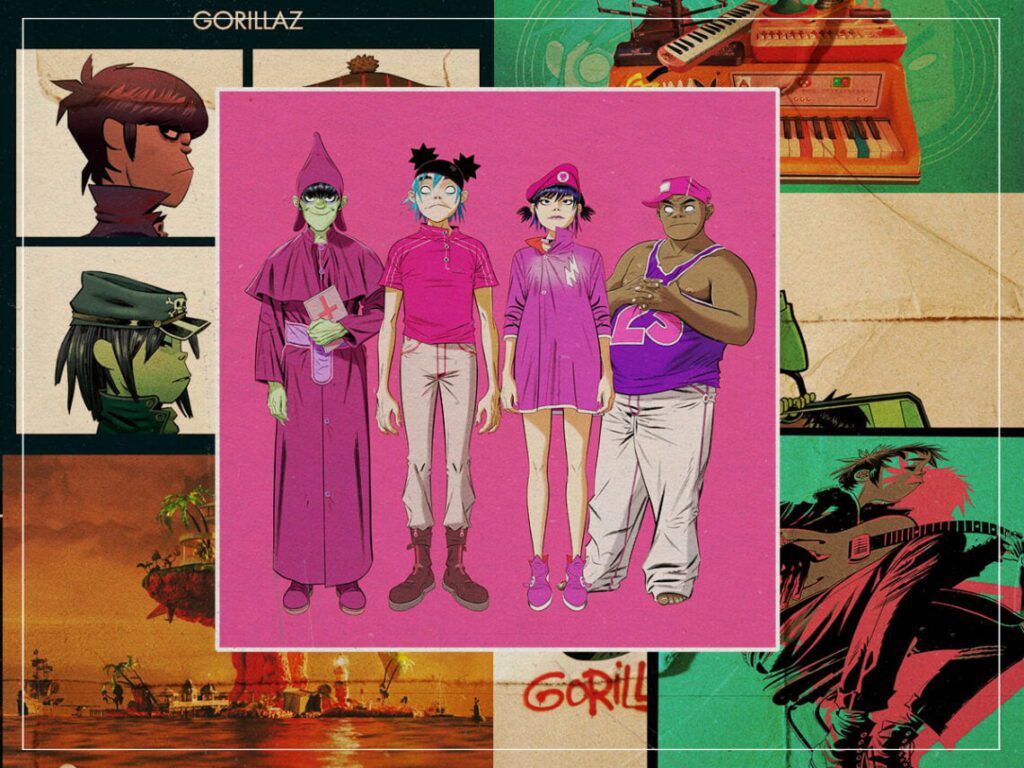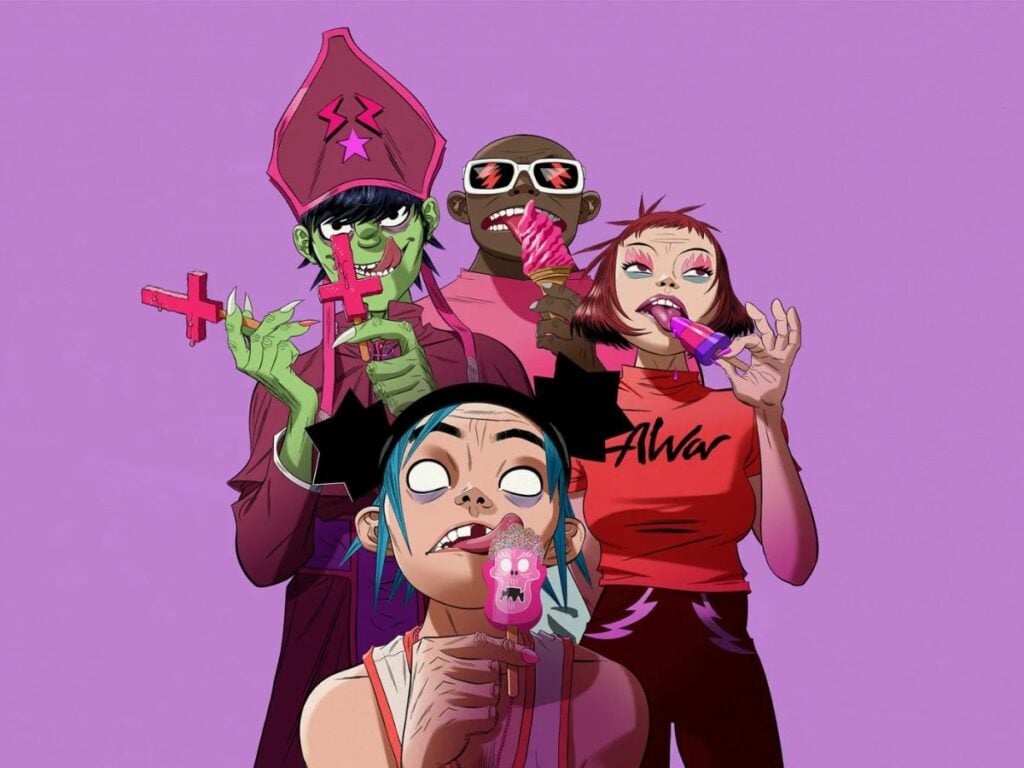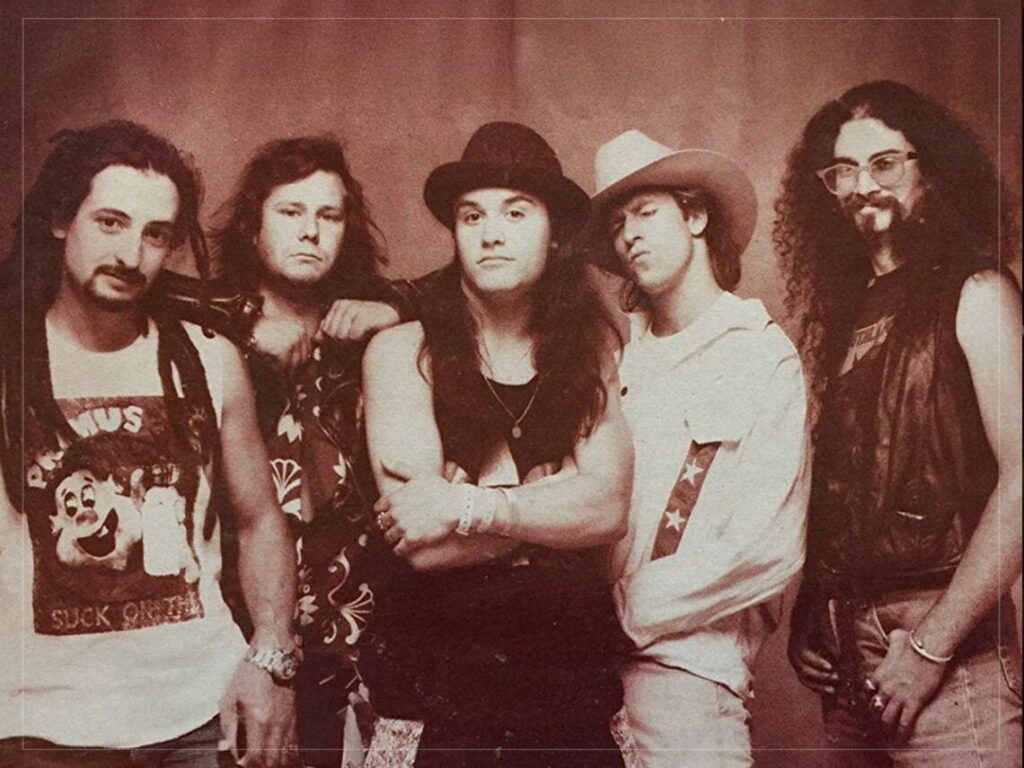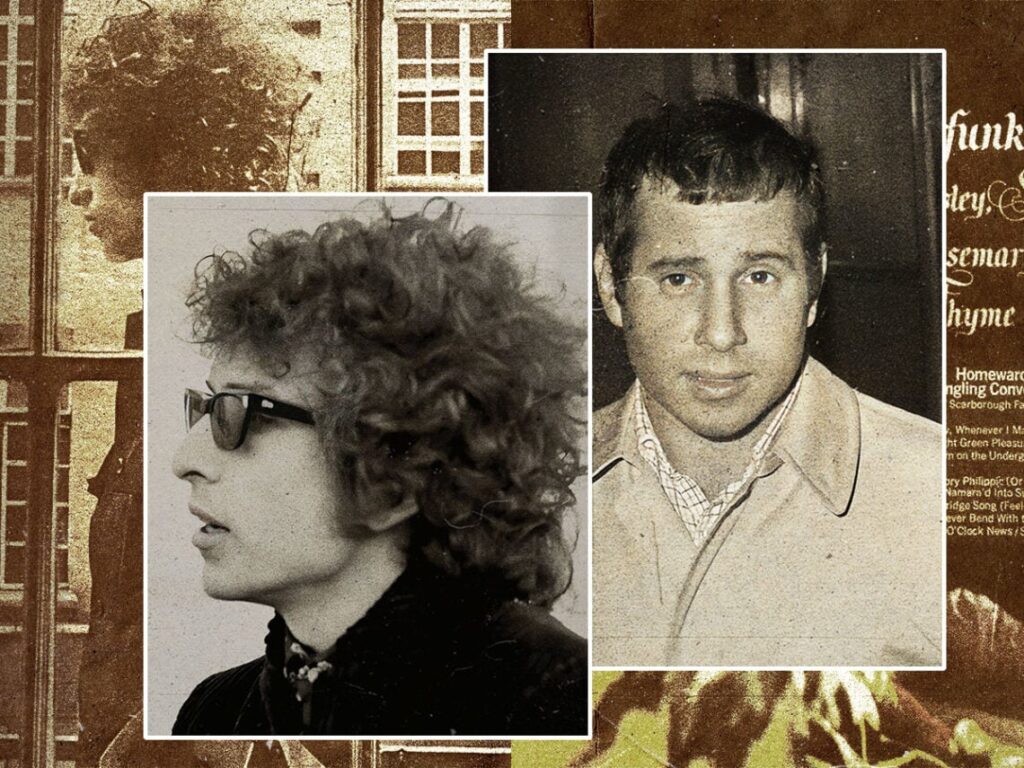Gorillaz: the alternative hip-hop experiment that shouldn’t have worked for Damon Albarn
 Posted On
Posted On
(Credits: Far Out / Parlophone Records / Gorillaz)
The heady days of the 1990s and ‘Cool Brittania’ often conjure images of tracksuit-clad Britpop legends and popstar opulence, all enjoying the fruits of their artistic labour. While hip-hop flourished in the United States, it remained deep within the subculture of the UK while bands like Pulp, Blur and Oasis took centre stage.
Despite the obvious crossover of each ‘90s UK burgeoning scene with one another, there was somewhat of an unspoken “stay in your lane” culture that they all abided by. Liam Gallagher knew what he contributed to that period of time and leaned into it fully. Similarly, outfits like Roots Manuva and The Prodigy mastered the craft, giving a voice to those otherwise disillusioned by the guitars of the intensely popular indie scene.
It’s a culture that made Blur’s mainstream success somewhat surprising. For their leader, Damon Albarn presented a quirkier image than his more confident and self-assured contemporaries. The band’s sound represented that part brit-pop and part art-rock that saw the musicians colouring outside the lines of a more raucous yet conventional four-chord Britpop sound.
Given what we know now and with the crystal clear vision hindsight always provides, it’s no surprise that Damon Albarn forayed into electronic music and hip-hop with Gorillaz. But at the time, a switch to those genres could have veered on the verge of parody, particularly for the floppy-haired leader of what was perceived as a middle-class London indie band.
“People weren’t meant to know it was me,” Albarn told The Guardian back in 2017. “Even now, I think, during the gigs, I’m going to be able to go off, go backstage and make myself a drink, and a hologram will take my place for a couple of songs.”

Such a comment alludes to Albarn thinking he had some sort of crippling level of fame, where buying a pint of milk from the corner shop becomes a national event. While he was never at that level, he was certainly a rung below, for the cultural footprint of Blur simply cannot be underestimated. But it’s important to know why he wasn’t intense paparazzi bait, which is because his artistry superseded any sense of celebrity.
And that essence of his personality made Gorillaz such a success. Not only was he acutely aware that a public-facing genre shift into hip-hop could have been cringe-worthy, but it was equally as important to create a faceless vessel in which the music, regardless of who was behind it, came before the celebrity.
Beyond the subtle dig at celebrity vanity and adoption of futuristic design technologies, the project gave Albarn a wider scope to exercise his experimental sensibilities. If the popstars of tomorrow were going to be cartoon holograms, then the music to accompany them had better fit appropriately, and that meant setting himself free of the melody-led tendencies of an electric guitar.
“One of the reasons I began Gorillaz is I had a lot of rhythms I never thought I could use with Blur. A lot of that stuff never really seemed to manifest itself in the music we made together as Blur,” Albarn told Q Magazine in 2001. What followed was a string of songs that placed Albarn’s tender and, at times, melancholic vocals onto rudimentary keyboard melodies and electronic drum beats, inspiring a new revolution of indie hip-hop.
To say the project was transformative is an understatement. While Blur never really reached the same heights of success as Oasis, Albarn has forged a career that allows him to comfortably sit at the helm of any creative project that comes his way. Snoop Dogg, MF DOOM and De La Soul all appeared on the early Gorillaz records while his once rival Liam Gallagher was dying on a hill built in 1994.
To a creative like Albarn, the most important metric in measuring the influence of his work is the echoes of influence heard in the works of Tyler, the Creator or Baby Dave. But for those with a more quantitative disposition, you should know that Albarn’s project made him the first person to consecutively headline Glastonbury with two separate bands, with Gorillaz following on from Blur in 2009 on the Pyramid. How’s that for cultural impact?
[embedded content]
Related Topics


